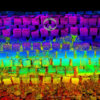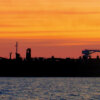The global move from fossil fuels to renewables is top of the agenda for industry. The goal to reach the 2050 decarbonisation target set by the 2015 Paris Agreement is clear. For the dredging sector, that means moving away from the classical energy drivers of trenching and backfilling in the building of gas terminals, for example, and moving towards new interpretations of that driver with seabed preparations and scour protection of offshore wind farms.
One of the heralded solutions in the maritime industry is the use of LNG vessels. Ships are now equipped with dual fuel although LNG equipment requires additional investment. CIRIA has recently published three sustainability factors developed for this purpose. Other fuels, such as ammonia, methanol and hydrogen are also being developed. The first dual fuel methanol vessel has been ordered and will be delivered in 2024.
The availability of new fuels however, is still uncertain and may act as a brake on the energy transition. While renewables are already often cheaper than fossil fuel power in much of the world, the crisis in the Ukraine has seen prices of LNG increase. More costs means projects become more expensive, which could also serve to slow the transition to a net-zero world.
One thing that is certain is it’s going to take collaboration to tackle climate change and to reach the goals set by the Paris Agreement.
Conducting joint research to be able to work more sustainably makes the dredging sector stronger and reduces risks in undertaking these studies. In addition, working together on a level playing field in the application of sustainability criteria in tenders also increases the social value of individual projects and thus of our sector. The sharing of information is therefore key.
A prime example is the Climate Risk Overview tool. Developed by Van Oord, this web-based global mapping tool brings together key parameters, such as populations, low-lying land and expected sea level rise to anticipate the hazard of flooding for all coastlines and societies around the world. Free to use, the tool and its information is available for everyone to explore and provides a useful resource for potential climate adaptation projects across the globe. You can read the full article on page 6.
Other articles in this issue include a roundup of all the submissions in the running for IADC’s Safety Awards 2022, along with the winning technical article from the recipient of this year’s Young Author Award, presented to Suman Sapkota at WODCON XXIII in Copenhagen in May.














